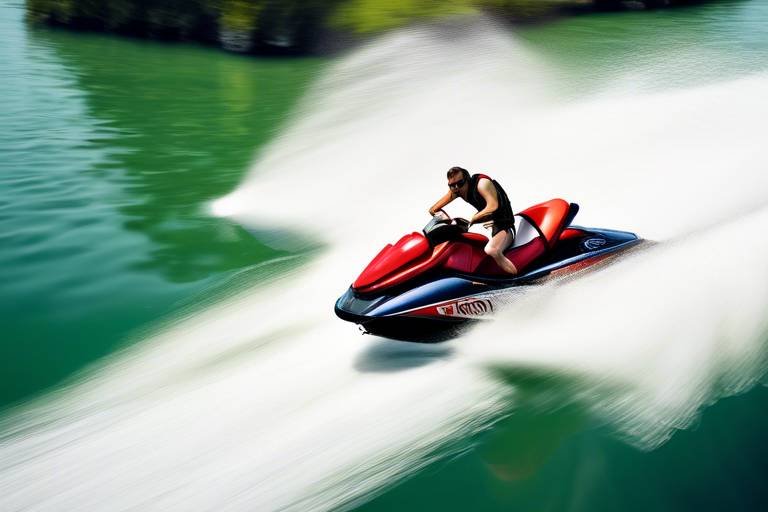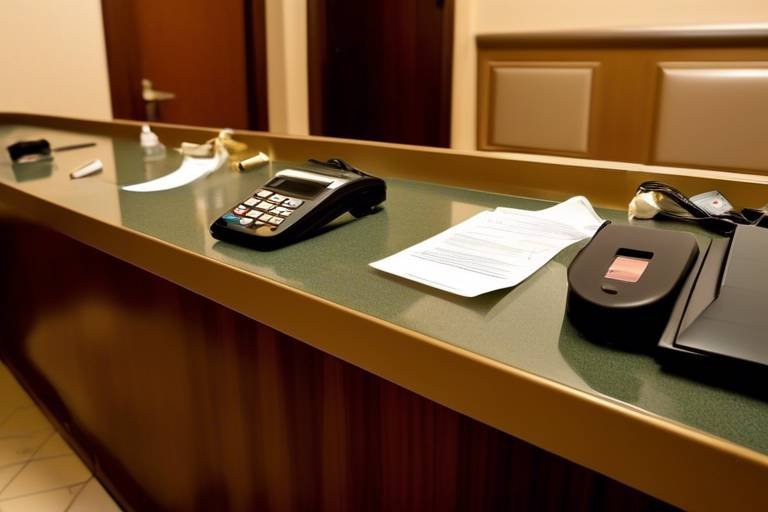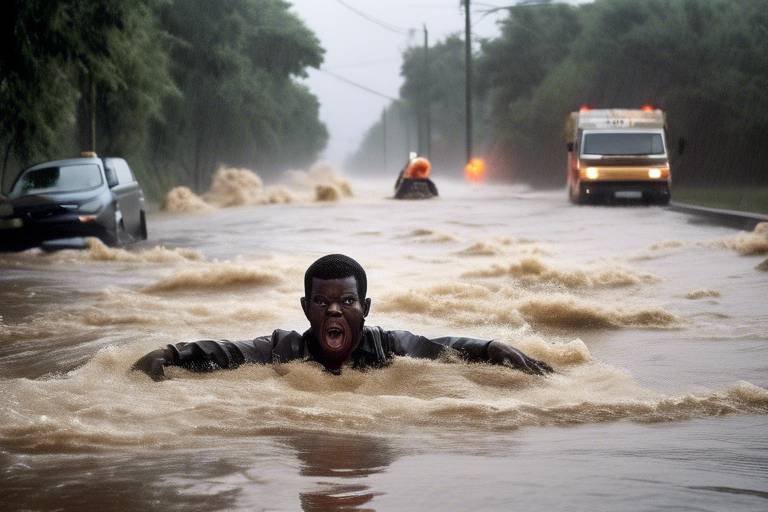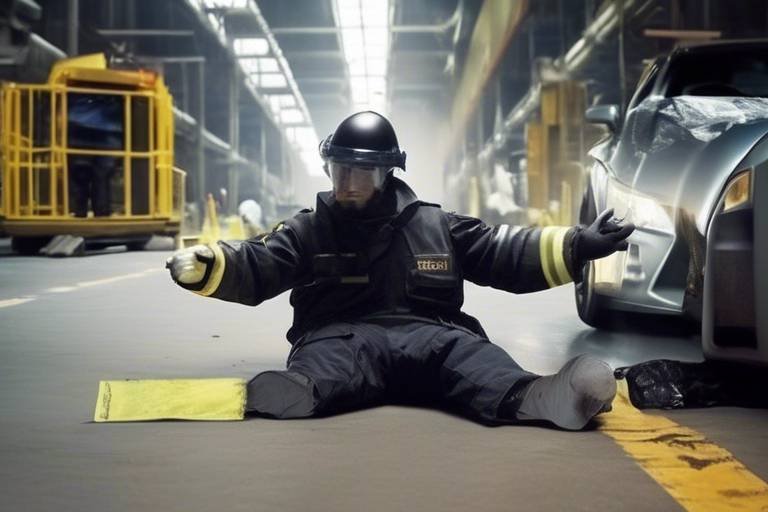Jet Ski Safety - Stay Safe While Having Fun
Jet skiing is one of those thrilling activities that can make you feel alive, like flying over the water with the wind in your hair. However, just like any adventure, it comes with its own set of risks. That's why understanding jet ski safety is critical for both novice and experienced riders. This article covers essential safety tips, regulations, equipment, and best practices to ensure a safe and enjoyable jet skiing experience for all riders, regardless of skill level.
Before you even think about hitting the water, it’s crucial to understand how jet skis operate. These high-speed machines are not just toys; they have features and controls that require your full attention. Familiarize yourself with the throttle, steering, and safety lanyard, which is designed to cut the engine if you fall off. Regular maintenance checks are also vital to keep your jet ski in top shape. Remember, a well-maintained jet ski not only performs better but can also prevent accidents. So, before you rev up that engine, take some time to read the manual and understand the machine you’re about to ride.
Wearing the right safety gear is not just a recommendation; it’s a necessity for anyone venturing out on a jet ski. Think of safety gear as your armor against potential mishaps. The most crucial piece of equipment is undoubtedly the life jacket. But it doesn’t stop there; helmets and protective clothing can also enhance your safety on the water. Imagine riding without a life jacket—it's like walking a tightrope without a safety net. You might feel invincible, but one wrong move can change everything. Make sure you’re equipped with the right gear before you set off.
Selecting an appropriate life jacket is essential for safety. Not all life jackets are created equal, and choosing the right one can be the difference between life and death in an emergency. Look for a jacket that fits snugly but allows for movement. It should be comfortable enough that you forget you’re wearing it, yet secure enough that it won’t come off in the water. Life jackets come in various types, including inflatable, vest-style, and hybrid options. Each has its specific features that cater to different riding styles and conditions.
A well-fitted life jacket ensures maximum protection. To check for proper fit, make sure you can raise your arms without restriction and that the jacket doesn’t ride up when you lift. A simple test is to grab the shoulder straps and pull upwards; if the jacket lifts more than an inch, it’s too loose. Comfort is key; if you’re uncomfortable, you’re less likely to wear it. Remember, it’s better to be safe than sorry!
Explore the various types of life jackets designed for jet skiing. Here’s a quick rundown:
- Inflatable Life Jackets: Lightweight and comfortable, these inflate upon impact.
- Vest-Style Life Jackets: These are traditional and offer great buoyancy.
- Hybrid Life Jackets: A combination of both styles, providing versatility.
Each type has specific features for enhanced safety, so choose wisely based on your riding style and comfort.
In addition to life jackets, other safety equipment is crucial. Think of these items as your safety toolkit. Essential gear includes whistles for signaling, fire extinguishers in case of emergencies, and first aid kits to handle minor injuries. Being prepared can make all the difference in a tense situation. Here’s a quick checklist of additional safety equipment:
- Whistle
- Fire extinguisher
- First aid kit
- Tool kit for minor repairs
Having these items on board can be lifesaving, so don’t skimp on your safety preparations!
Jet ski riders must be aware of local laws and regulations governing watercraft use. Ignorance is not bliss when it comes to safety; understanding the rules can save you from hefty fines or worse. Regulations can vary widely by location, so it’s essential to familiarize yourself with them before you hit the water. This includes knowing the designated riding areas, speed limits, and any specific rules for operating a jet ski.
Many regions require specific licenses or training for jet ski operators. These requirements are in place to ensure that riders are knowledgeable about safe practices and the operation of their watercraft. Check with your local authorities to see what’s required in your area. Completing a safety course not only makes you a better rider but also gives you the confidence to handle your jet ski safely.
Understanding speed limits and no-wake zones is essential for safety and environmental protection. Speed limits are enforced to prevent accidents and protect wildlife. No-wake zones are areas where you must slow down to avoid creating waves that can damage shorelines and disturb marine life. Always be aware of your surroundings and respect these regulations; they exist for a reason.
Implementing best practices while jet skiing can significantly enhance safety. Think of these practices as your riding mantra. Always maintain control of your jet ski and be aware of your surroundings. Situational awareness is key; keep an eye out for other watercraft, swimmers, and obstacles. It’s also essential to ride in a straight line when possible, as sudden turns can lead to loss of control.
Keeping a safe distance from other watercraft and obstacles is crucial. Imagine driving a car; you wouldn’t tailgate or weave in and out of traffic, right? The same principle applies on the water. Maintain a buffer zone between you and other riders to avoid collisions. This distance gives you ample time to react if someone else makes an unexpected move.
Weather conditions can change rapidly on the water. Always check the forecast before heading out, and be prepared to turn back if conditions worsen. Familiarize yourself with signs of changing weather, such as dark clouds or increasing wind. Your safety is paramount, so don’t hesitate to cut your ride short if the weather turns sour.
Being prepared for emergencies can save lives. Just like a fire drill prepares you for the worst, having a plan for jet skiing emergencies can make all the difference. Before riding, ensure that you have a communication plan in place with fellow riders. Establishing a way to signal for help can enhance safety and ensure that everyone knows what to do in case of an emergency.
Establishing a communication plan with fellow riders can enhance safety. This could include using hand signals or designated meeting points in case someone gets separated. Make sure everyone knows how to use their phones or radios if you’re riding in a group. Clear communication can prevent panic and confusion in emergencies.
Knowing how to respond in case of an accident is vital. First aid knowledge can be lifesaving, so consider taking a course to prepare yourself. If an accident occurs, stay calm and assess the situation. Contact authorities if necessary, and always prioritize the safety of everyone involved. Remember, staying calm can help you think clearly and respond effectively.
Q: Do I need a license to operate a jet ski?
A: It depends on your local regulations. Many areas require a boating license or safety course completion.
Q: What should I do if I capsize?
A: Stay with your jet ski, as it can serve as a flotation device. Signal for help if needed.
Q: How can I prevent sunburn while jet skiing?
A: Wear UV-protective clothing and apply waterproof sunscreen before heading out.

Understanding Jet Ski Basics
This article covers essential safety tips, regulations, equipment, and best practices to ensure a safe and enjoyable jet skiing experience for all riders, regardless of skill level.
Before you rev up that engine and hit the sparkling waters, it's crucial to get a grip on the basics of jet skiing. Understanding how your jet ski operates is like knowing the rules of the road before you drive a car. Jet skis, also known as personal watercraft (PWC), are designed for speed and agility, but they require a certain level of knowledge to operate safely. They come equipped with various features, such as throttle controls, steering mechanisms, and safety lanyards, all of which play a pivotal role in ensuring a smooth and safe ride.
First and foremost, let’s talk about the controls. The throttle, located on the right handlebar, determines your speed. Squeeze it gently to accelerate, and release it to slow down. It’s important to practice this in a safe area to get a feel for how your jet ski responds. The steering works similarly to a motorcycle; turning the handlebars will direct your craft. However, unlike a car, jet skis don’t have brakes. Instead, you must let off the throttle to slow down and steer away from obstacles. This can be a bit tricky, especially for beginners, so practice makes perfect!
Maintenance is another critical aspect of jet skiing that often gets overlooked. Just like any vehicle, jet skis require regular upkeep to ensure they function correctly. Here are a few key maintenance tips:
- Check the oil: Regularly inspect the oil levels and change it according to your manufacturer’s guidelines.
- Inspect the fuel: Always use the right type of fuel and check for any water contamination.
- Clean the hull: After each ride, rinse off saltwater or debris to prevent corrosion and damage.
- Battery care: Ensure your battery is charged and connections are clean.
Understanding these basics not only enhances your riding experience but also significantly contributes to your safety. Imagine trying to ride a bicycle without knowing how to steer or brake—jet skiing is no different! The thrill of gliding over waves can quickly turn into a nightmare if you’re not prepared.
Moreover, it’s essential to familiarize yourself with the specific features of your particular model. Some jet skis come with advanced technology, like cruise control or even GPS systems. Knowing how to use these features can improve your ride and keep you safer on the water.
In essence, jet skiing is about embracing the freedom of the open water while being aware of your surroundings and the craft you’re operating. By understanding the basics, you’re setting yourself up for a fun and safe adventure that you and your friends will remember for years to come!
Wearing the right safety gear is vital for jet ski riders. This section discusses the necessary equipment, including life jackets, helmets, and protective clothing to enhance safety on the water.
Selecting an appropriate life jacket is essential for safety. Learn about the different types available and how to choose one that fits properly and meets safety standards.
A well-fitted life jacket ensures maximum protection. This section explains how to check for proper fit and comfort while maintaining safety during your ride.
Explore the various types of life jackets designed for jet skiing, including inflatable, vest-style, and hybrid options, and their specific features for enhanced safety.
In addition to life jackets, other safety equipment is crucial. This section covers items like whistles, fire extinguishers, and first aid kits to prepare for emergencies.
Jet ski riders must be aware of local laws and regulations governing watercraft use. This section outlines key regulations to ensure compliance and promote safe riding practices.
Many regions require specific licenses or training for jet ski operators. Learn about the necessary certifications to ensure you're legally allowed to ride.
Understanding speed limits and no-wake zones is essential for safety and environmental protection. This section discusses how to navigate these areas responsibly.
Implementing best practices while jet skiing can significantly enhance safety. This section highlights essential tips for maintaining control, situational awareness, and safe riding techniques.
Keeping a safe distance from other watercraft and obstacles is crucial. This section explains the importance of spacing and how to avoid collisions on the water.
Weather conditions can change rapidly on the water. Learn how to assess weather forecasts and recognize signs of changing conditions to ensure a safe ride.
Being prepared for emergencies can save lives. This section discusses essential steps to take before riding and what to do in case of an emergency while jet skiing.
Establishing a communication plan with fellow riders can enhance safety. This section covers strategies for staying in touch and signaling in case of emergencies.
Knowing how to respond in case of an accident is vital. This section provides guidance on first aid, contacting authorities, and handling various emergency situations.
Here are some common questions and answers regarding jet ski safety:
- What should I wear while jet skiing? Always wear a life jacket, and consider protective clothing such as wetsuits or drysuits depending on the weather.
- Do I need a license to operate a jet ski? Yes, many regions require a boating license or safety course completion.
- How can I ensure my jet ski is safe to ride? Regular maintenance checks, including oil and fuel inspections, are essential for safe operation.

Essential Safety Gear
When it comes to jet skiing, safety should always be your top priority. Just like you wouldn't ride a bicycle without a helmet, you shouldn't hit the water without the proper safety gear. This isn't just about following rules; it's about ensuring you have a fantastic time while minimizing risks. The right equipment can make all the difference between a thrilling adventure and a potentially dangerous situation. So, let’s dive into the essential safety gear that every jet ski rider should have!
First and foremost, a good life jacket is non-negotiable. Not all life jackets are created equal, and choosing the right one can significantly impact your safety. It's vital to select one that fits you well and is designed for the specific activity you're engaging in. A life jacket that is too loose can slip off, while one that is too tight can restrict your movement. Remember, comfort is key because you want to feel secure without being constricted.
When selecting a life jacket, consider the following factors:
- Type: There are various types of life jackets, including inflatable, vest-style, and hybrid options. Each type has its unique features designed for different activities.
- Fit: A well-fitted life jacket should allow you to move freely while keeping you buoyant if you fall into the water.
- Visibility: Bright colors can help rescuers spot you quickly in case of an emergency.
To ensure your life jacket fits correctly, try the following steps:
- Put the life jacket on and fasten all straps.
- Lift your arms above your head. If the jacket rises significantly above your waist, it’s too loose.
- Check that you can comfortably breathe and move your arms without restriction.
Here's a brief overview of the different types of life jackets:
| Type | Description | Best For |
|---|---|---|
| Inflatable | Lightweight and comfortable, inflates when submerged. | Calm waters, experienced riders. |
| Vest-style | Traditional design, provides good buoyancy. | General use, all skill levels. |
| Hybrid | Combines features of both inflatable and vest-style jackets. | Versatile use, varying conditions. |
In addition to a life jacket, there are other pieces of essential safety equipment that can enhance your protection while jet skiing. These include:
- Helmets: Helmets can protect your head from impacts, especially if you're riding in rough waters or performing tricks.
- Protective Clothing: Wearing a wetsuit or drysuit can help shield you from the elements and provide additional buoyancy.
- Whistles: A whistle can be a lifesaver in emergencies, allowing you to signal for help.
- Fire Extinguishers: If your jet ski has a fuel source, having a fire extinguisher onboard is crucial.
- First Aid Kits: Be prepared for minor injuries with a well-stocked first aid kit.
In conclusion, equipping yourself with the right safety gear is crucial for an enjoyable and safe jet skiing experience. Remember, it's not just about having fun; it's about being responsible and prepared for anything that might come your way. After all, a great day on the water starts with being safe!
Q: Do I need a life jacket if I'm a good swimmer?
A: Yes! Even the best swimmers can encounter unexpected situations, so wearing a life jacket is essential for safety.
Q: What should I do if my life jacket feels uncomfortable?
A: If your life jacket is uncomfortable, it’s crucial to adjust the straps or consider trying a different type that fits you better.
Q: Are there age restrictions for wearing life jackets?
A: Yes, many regions have regulations that require children to wear life jackets at all times while on a jet ski.
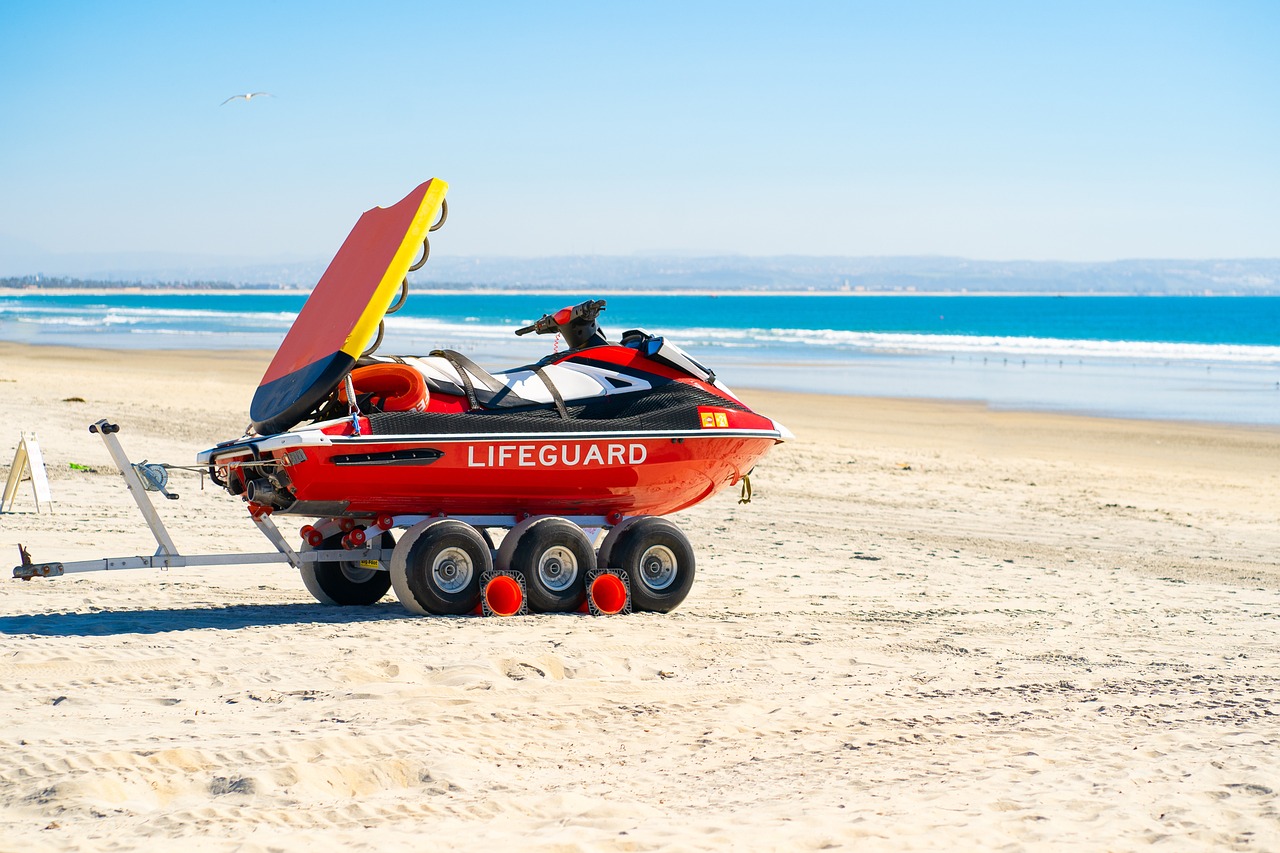
Choosing the Right Life Jacket
When it comes to jet skiing, selecting the right life jacket is not just about following regulations; it’s about ensuring your safety and comfort on the water. A life jacket can be the difference between a fun day out and a potential disaster. So, how do you choose the right one? First, consider the type of riding you’ll be doing. Are you a casual rider, or do you plan on racing through the waves? Each activity may require a different style of life jacket.
Next, think about the fit. A life jacket should be snug but not restrictive. It should allow you to move freely while providing adequate flotation. To check if your life jacket fits properly, perform the following test: raise your arms above your head. If the jacket rides up significantly, it’s too loose. Ideally, it should stay in place, giving you peace of mind while you enjoy your ride.
There are several types of life jackets to choose from, each designed with specific features tailored for different activities. Here’s a breakdown of the most common types:
| Type | Description | Best For |
|---|---|---|
| Vest-style | Offers excellent mobility and is easy to put on. | Recreational riding |
| Inflatable | Compact and comfortable, inflates automatically or manually. | Calm waters and leisure rides |
| Hybrid | Combines the benefits of both vest and inflatable jackets. | Versatile use in various water conditions |
When selecting a life jacket, always look for one that meets the U.S. Coast Guard standards. This ensures that the jacket has been tested for safety and performance. Additionally, consider your personal preferences regarding color and style. After all, you want to feel good while you’re out there!
Lastly, don’t forget to check the maintenance requirements. Life jackets can wear out over time, especially if exposed to harsh conditions. Regularly inspect your jacket for any signs of damage, such as tears or faded materials, and replace it if necessary. Remember, your safety is paramount, and a well-maintained life jacket can provide the protection you need on the water.
- What size life jacket do I need? The size of your life jacket should be based on your weight and chest measurement. Always refer to the manufacturer’s sizing chart.
- Can I wear a life jacket over a wetsuit? Yes, wearing a life jacket over a wetsuit is common and can enhance your safety.
- How often should I replace my life jacket? It’s recommended to replace your life jacket every 5 years or sooner if you notice any damage.
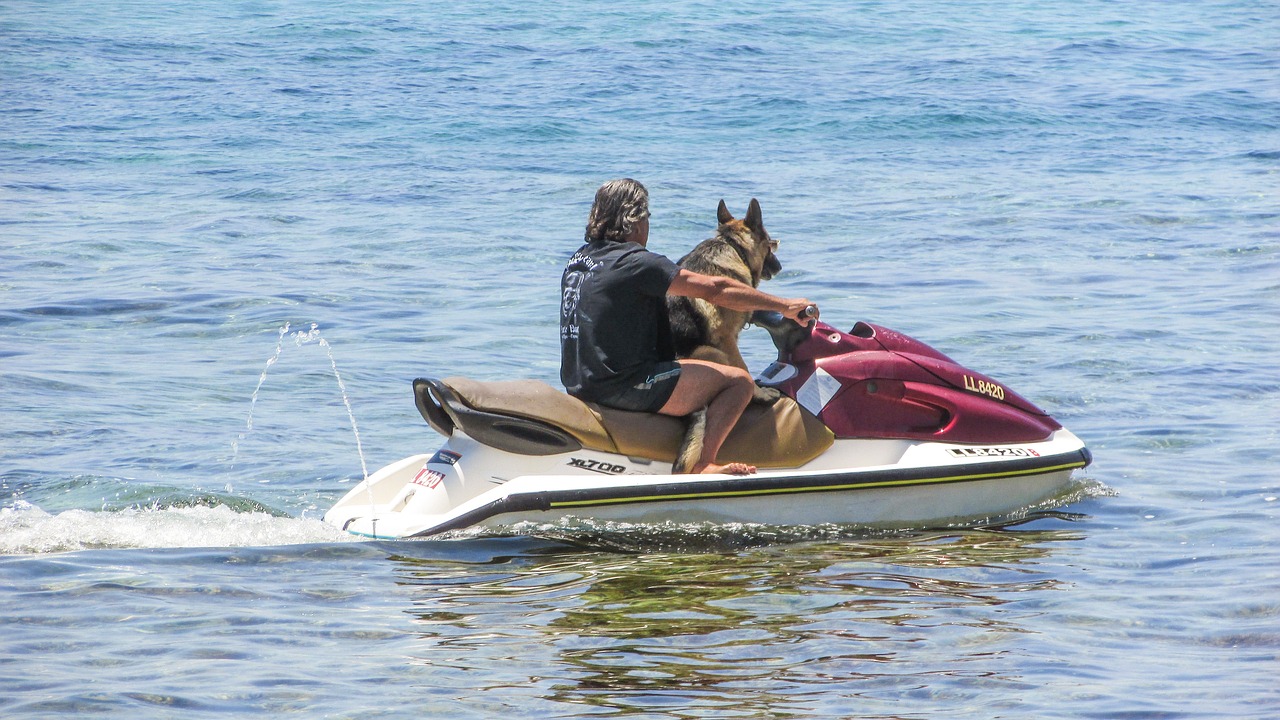
Life Jacket Fit and Comfort
When it comes to jet skiing, comfort and fit of your life jacket are not just about feeling good; they are essential for your safety on the water. A well-fitted life jacket can make the difference between a fun day on the water and a potentially dangerous situation. So, how do you ensure that your life jacket fits properly?
First, it's important to understand that life jackets come in various sizes and styles, and finding the right one for your body type is crucial. A life jacket should be snug but not restrictive. You should be able to move your arms freely and breathe comfortably. To check the fit, try lifting your arms above your head. If the jacket rides up significantly, it may be too large. Conversely, if it feels too tight, you might want to consider a larger size.
Another key aspect of life jacket comfort is the material it’s made from. Many modern life jackets are designed with breathable fabrics that wick away moisture and allow for airflow. This is particularly important during hot summer days when you’re likely to be sweating. Look for jackets with adjustable straps, as they allow you to customize the fit to your liking. Here’s a quick checklist to consider when assessing life jacket fit and comfort:
- Does it sit snugly against your body without being too tight?
- Can you easily move your arms and shoulders?
- Is the material breathable and comfortable against your skin?
- Do the straps allow for adjustments to ensure a secure fit?
Additionally, consider the design and style of the jacket. Some jackets come with added features like pockets for storing small essentials or reflective strips for visibility. These can enhance both convenience and safety while you’re out on the water. However, remember that the primary goal is to ensure that it fits well and keeps you safe.
Finally, don’t forget to try on your life jacket before heading out. Just like trying on a pair of shoes, it’s essential to make sure that it feels right. If possible, test it in water to see how it performs. A life jacket that fits well not only protects you but also gives you peace of mind, allowing you to focus on enjoying your time on the water.
Q: How do I know what size life jacket to buy?
A: Most life jackets come with sizing charts based on your weight and chest measurement. It’s best to try on a few different sizes to see which one fits you best.
Q: Can I wear a life jacket over my clothing?
A: Yes, but ensure that it still fits snugly. If you wear bulky clothing underneath, you might need to go up a size.
Q: How often should I replace my life jacket?
A: Life jackets should be replaced if they show signs of wear and tear, such as fraying straps or cracks in the material. It's also recommended to replace them every 5-10 years, even if they appear to be in good condition.
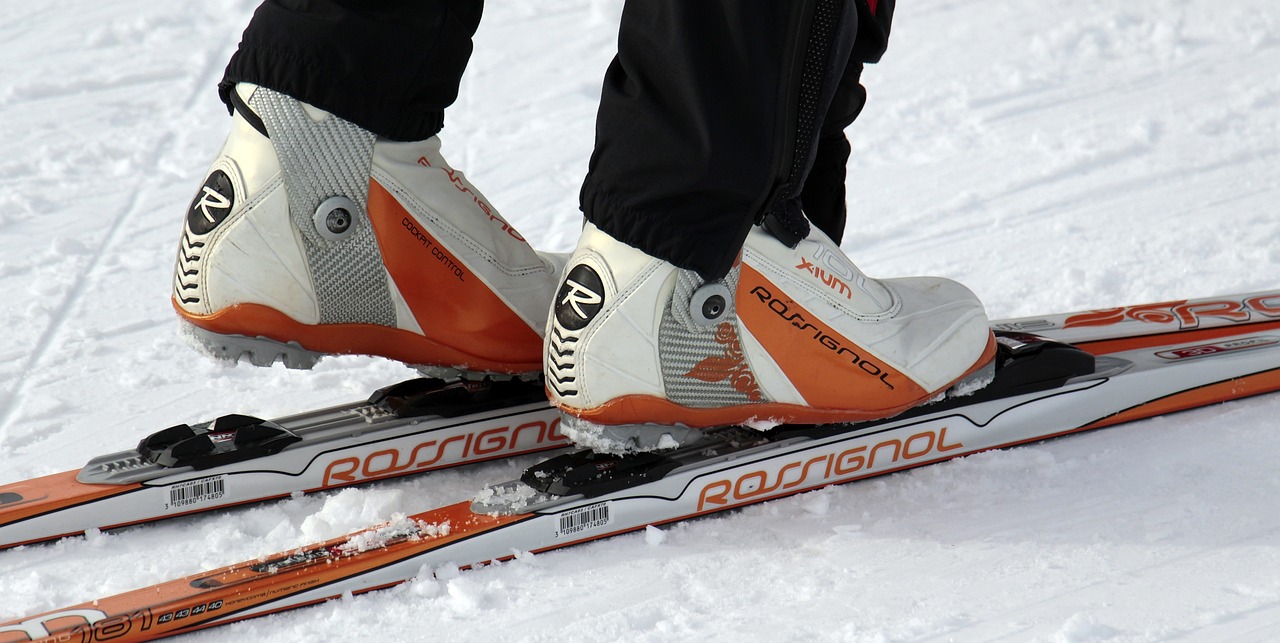
Types of Life Jackets
When it comes to jet skiing, wearing a life jacket is not just a recommendation; it's a necessity. Life jackets come in various types, each designed to cater to specific needs and situations on the water. Understanding the differences can help you make an informed choice that enhances your safety and enjoyment while riding. Let's explore the most common types of life jackets you'll encounter:
- Inflatable Life Jackets: These jackets are lightweight and comfortable, making them a popular choice among many riders. They inflate automatically upon immersion in water or can be manually inflated when needed. While they offer excellent buoyancy, it's essential to check their condition regularly, as they can be punctured.
- Vest-Style Life Jackets: This type is designed to fit snugly against your body, providing a good range of motion. Vest-style jackets are often made from foam and are less bulky than other types, making them great for active sports like jet skiing. They come in various sizes and buoyancy levels, so it's crucial to choose one that fits well.
- Hybrid Life Jackets: Combining the best features of inflatable and vest-style jackets, hybrid options offer both buoyancy and comfort. They typically have a foam core for added safety and can inflate in emergencies. These jackets are perfect for those who want the best of both worlds.
Choosing the right life jacket isn't just about personal preference; it's about ensuring that you have the right level of safety for your specific riding conditions. For instance, if you're jet skiing in rough waters, a more robust vest-style jacket might be a better choice than a lightweight inflatable. On the other hand, if you're cruising in calm waters, an inflatable jacket could provide the comfort and freedom of movement you desire.
It's also important to consider the buoyancy rating of the life jacket. Most life jackets are rated based on how much weight they can support in water. This rating is crucial for ensuring that the jacket will keep you afloat in case of an emergency. Always check the manufacturer's specifications to ensure that the life jacket meets safety standards.
Lastly, remember that life jackets come in various designs and colors. While aesthetics might not seem important, choosing a bright color can increase your visibility in the water, making it easier for others to spot you in case of an emergency. So, when you're selecting your life jacket, think about safety, comfort, and visibility to ensure you have the best possible experience on the water!
1. How do I know which life jacket is right for me?
Choosing the right life jacket depends on several factors, including your weight, the type of water activities you’ll be doing, and personal comfort. Always refer to the size chart provided by the manufacturer and consider trying on different jackets to find the best fit.
2. Are inflatable life jackets safe for jet skiing?
Yes, inflatable life jackets are safe for jet skiing as long as they are maintained properly and meet safety standards. Always ensure the jacket is in good condition and familiarize yourself with how to inflate it before hitting the water.
3. Do I need to wear a life jacket at all times while jet skiing?
Most regulations require that you wear a life jacket while operating a jet ski. It’s a good practice to keep it on at all times, even when you're not actively riding, as accidents can happen unexpectedly.
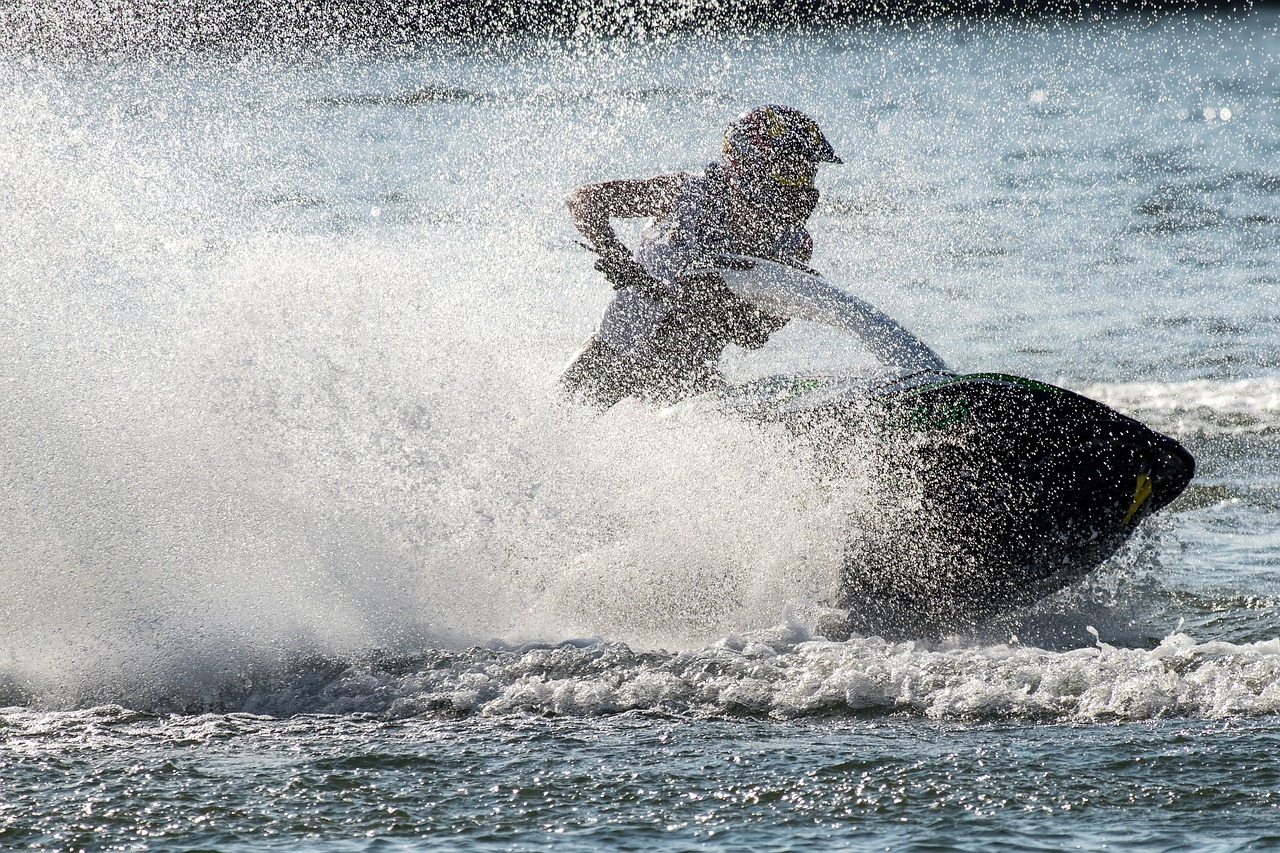
Additional Safety Equipment
When it comes to jet skiing, wearing a life jacket is just the tip of the iceberg. While that’s certainly a non-negotiable piece of safety gear, there’s a whole arsenal of additional equipment you should consider to ensure your time on the water is not only thrilling but also secure. Think of your jet ski as a high-speed adventure machine; just like a car needs more than just seatbelts, your jet ski requires a comprehensive safety kit. So, what else should you pack for your aquatic escapades? Let’s dive in!
First off, one essential item that often gets overlooked is a whistle. This small but mighty tool can be a lifesaver. If you find yourself in a tough spot, a whistle can alert nearby boaters or fellow riders to your location. It's lightweight, easy to carry, and can be attached right to your life jacket for quick access. Imagine being stranded and having to shout for help—your voice can only carry so far, but a whistle can be heard from a distance!
Next on the list is a fire extinguisher. Yes, you read that right! Even though jet skis are designed with safety in mind, accidents can still happen. Having a fire extinguisher on board ensures you're prepared for any unexpected flare-ups. Ensure it’s rated for marine use and easily accessible. In the case of an emergency, every second counts, and fumbling around for a fire extinguisher could mean the difference between a small incident and a larger disaster.
Another vital piece of equipment is a first aid kit. Just like any outdoor activity, injuries can occur, whether it’s a scrape from a fall or a more serious accident. A well-stocked first aid kit should include items like band-aids, antiseptic wipes, gauze, and even a CPR mask. You might think, “I’ll be fine, nothing will happen,” but remember, it's better to be over-prepared than underprepared. You wouldn’t go hiking without a first aid kit, right? The same logic applies to jet skiing.
Additionally, consider investing in a waterproof dry bag. This bag can keep your valuables safe and dry while you’re out on the water. Whether it’s your phone, wallet, or extra clothing, a dry bag ensures that everything stays protected from splashes and unexpected downpours. After all, the last thing you want is to ruin your day because your phone got soaked!
Lastly, don't forget about flares or a signal mirror. These items can be invaluable for signaling for help in case of an emergency. Flares are especially useful for attracting attention from rescue boats, while a signal mirror can reflect sunlight and help you be seen from afar. Just think of these as your lifelines when you need to make your presence known.
In conclusion, while a life jacket is crucial, it’s the additional safety equipment that can truly make a difference in an emergency. By taking the time to equip yourself with the right tools, you can enjoy your jet ski adventures with peace of mind, knowing that you're prepared for whatever challenges the water may throw your way.
Q: What should I do if I capsize my jet ski?
A: If you capsize, stay with your jet ski. It’s easier for rescuers to spot a jet ski than a person in the water. Make sure to wear your life jacket and signal for help if needed.
Q: How often should I check my safety equipment?
A: Regular checks before each ride are ideal. Ensure everything is in working order, including your life jacket, fire extinguisher, and first aid kit.
Q: Are there age restrictions for riding a jet ski?
A: Yes, many states have age restrictions and require a safety course for younger riders. Always check your local regulations before heading out.
Q: Can I ride a jet ski alone?
A: While it’s legal in many places, it’s safer to ride with a buddy. Having someone with you can be crucial in case of an emergency.
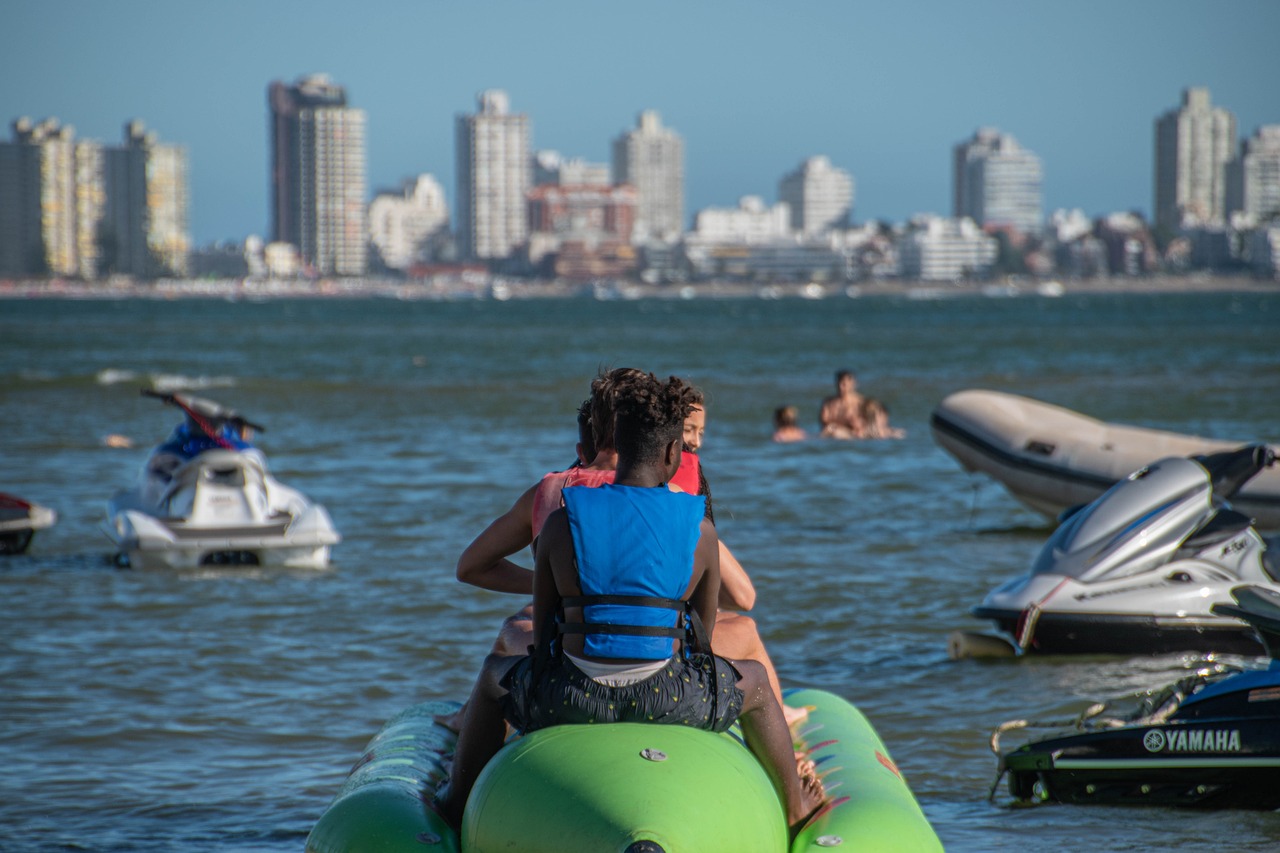
Understanding Local Regulations
When it comes to jet skiing, understanding local regulations is as crucial as knowing how to steer your watercraft. Each region has its own set of rules governing the use of jet skis, and being aware of these can not only keep you safe but also ensure you’re riding legally. Imagine cruising along the water, feeling the wind in your hair, only to be pulled over by authorities because you didn’t know the rules—definitely not the kind of thrill you want!
Local regulations can vary significantly from one area to another. Some places may require you to have a specific license or certification to operate a jet ski, while others may not. It’s essential to do your homework before you hit the water. You wouldn’t dive into a pool without checking the depth first, right? Similarly, familiarize yourself with the laws in your area. Here are some key points to consider:
- Licensing and Training: Many regions mandate that jet ski operators possess a boating safety certificate or a specific jet ski license. This ensures that you have the necessary skills and knowledge to operate the craft safely.
- Age Restrictions: Some locations impose age limits for operating a jet ski. For instance, minors may need to be accompanied by an adult or may be prohibited from riding alone.
- Equipment Requirements: Local laws might dictate the safety equipment you must carry on board, such as life jackets, fire extinguishers, and sound signaling devices.
In addition to licensing, you should also be aware of speed limits and no-wake zones. Speed limits are typically enforced to protect both riders and the environment. Ignoring these limits can lead to dangerous situations, not to mention hefty fines. No-wake zones are areas where you must operate your jet ski at a slow speed to prevent creating large waves that can erode shorelines or disturb wildlife. These zones are often marked with buoys, so keep an eye out!
To help you navigate the regulations more easily, here’s a simple table summarizing the common regulations you might encounter:
| Regulation Type | Description |
|---|---|
| Licensing | May require a boating safety certificate or specific jet ski license. |
| Age Restrictions | Minors may need adult supervision or may be prohibited from riding alone. |
| Equipment Requirements | Life jackets, fire extinguishers, and sound signaling devices may be required. |
| Speed Limits | Specific speed limits enforced for safety and environmental protection. |
| No-Wake Zones | Areas where slow speed is mandatory to prevent large waves. |
It's not just about following the rules; it's about respecting the water and everyone else enjoying it. Think of local regulations as the traffic lights of the waterways—ignoring them can lead to chaos. Before you embark on your jet skiing adventure, take the time to research and understand the regulations in your area. You can usually find this information on local government websites or by visiting your local boating safety organization.
In conclusion, staying informed about local regulations is paramount for ensuring a safe and enjoyable jet skiing experience. It not only protects you but also the environment and fellow riders. So, gear up, check the rules, and get ready to ride the waves responsibly!
Q: Do I need a license to operate a jet ski?
A: It depends on your location. Many places do require a boating safety certificate or a specific jet ski license.
Q: What safety gear is required by law?
A: Requirements can vary, but typically, you’ll need a life jacket, a whistle, and possibly a fire extinguisher.
Q: Are there age restrictions for riding a jet ski?
A: Yes, many regions have age restrictions. Minors often need to be accompanied by an adult.
Q: What are no-wake zones?
A: No-wake zones are areas where you must operate your jet ski at a slow speed to avoid creating large waves that can harm the environment.

Licensing and Training Requirements
When it comes to jet skiing, understanding the is as crucial as knowing how to steer your watercraft. Many regions have specific laws that mandate operators to possess a valid license or complete a training course before hitting the waves. This not only ensures that riders are knowledgeable about safe practices but also promotes a culture of responsibility on the water.
In the United States, for example, the requirements can vary significantly from one state to another. Some states require all operators to have a personal watercraft (PWC) license, while others may only require it for those under a certain age. It’s essential to check your local regulations to ensure compliance. In some cases, states may offer a boating safety course that covers essential topics such as navigation rules, emergency procedures, and equipment operation. Passing this course can often lead to obtaining your license.
Moreover, many organizations, including the U.S. Coast Guard and the National Association of State Boating Law Administrators (NASBLA), recommend completing a boating safety course. These courses not only enhance your knowledge but also provide valuable insights into how to handle emergencies, understand weather conditions, and operate your jet ski in a safe manner. Some states even offer incentives, such as discounts on insurance premiums, for completing these courses.
To give you a clearer picture, here's a quick overview of common licensing requirements across various states:
| State | License Required | Minimum Age | Training Course |
|---|---|---|---|
| Florida | Yes | 14 | Recommended |
| California | No | N/A | Recommended |
| Texas | Yes | 13 | Required |
| New York | Yes | 14 | Required |
In addition to state regulations, it’s wise to consider taking a jet ski safety course even if it’s not mandatory in your area. These courses can provide hands-on training and tips from experienced instructors, helping you become more confident and competent on the water. Remember, being well-prepared not only enhances your enjoyment but also contributes to the safety of everyone around you.
So, before you rev up that engine and feel the rush of the wind in your hair, make sure you’re equipped with the right knowledge and credentials. After all, a little preparation goes a long way in ensuring that your jet skiing adventure is both thrilling and safe!
- Do I need a license to operate a jet ski? - It depends on your state’s regulations. Some require a license, while others do not.
- What is the minimum age to ride a jet ski? - This varies by state, but many require operators to be at least 14 years old.
- Are safety courses mandatory? - Safety courses are not always mandatory, but they are highly recommended for all riders.
- Can I get insurance discounts for taking a safety course? - Yes, many insurance companies offer discounts for completing a recognized safety course.

Speed Limits and No-Wake Zones
When you're out on the open water, the thrill of jet skiing can be absolutely exhilarating. However, it's essential to remember that with great speed comes great responsibility. Understanding speed limits and no-wake zones is not just about following the rules; it's about ensuring the safety of yourself and others around you. Speed limits are typically set to protect both the riders and the environment, as excessive speed can lead to dangerous situations, including collisions and injuries.
No-wake zones are areas designated to minimize the impact of boat wakes on shorelines, wildlife, and other watercraft. These zones are often marked with signs, but it’s crucial to familiarize yourself with the local regulations as they can vary significantly from one location to another. In these zones, you must operate your jet ski at a slow speed—typically a speed that does not create a wake. This helps prevent erosion of the shore and protects sensitive habitats.
Here’s a quick breakdown of some common speed limits and no-wake zone regulations you might encounter:
| Location Type | Typical Speed Limit | No-Wake Zone |
|---|---|---|
| Residential Areas | Slow speed (usually under 5 mph) | Yes |
| Marinas | 5-10 mph | Yes |
| Open Water | Varies (check local regulations) | No |
Before you hit the water, make sure to check the local guidelines for speed limits and no-wake zones. Not only does adhering to these rules keep you safe, but it also fosters a sense of community among fellow riders and minimizes disruptions to wildlife. Remember, the goal is to enjoy your ride while being considerate of the environment and other water users.
So, the next time you're revving up your jet ski, take a moment to look around and assess your surroundings. Are there any signs indicating a no-wake zone? What are the speed limits in the area? By being mindful of these factors, you can enjoy your ride while ensuring that everyone on the water has a safe and enjoyable experience.
- What should I do if I accidentally enter a no-wake zone? - If you find yourself in a no-wake zone, immediately reduce your speed to comply with the regulations. Always be aware of your surroundings and keep an eye out for signage.
- Are speed limits the same everywhere? - No, speed limits can vary greatly depending on local regulations. Always check the specific rules for the area where you plan to jet ski.
- What are the penalties for exceeding speed limits? - Penalties can include fines, points on your boating license, or even the confiscation of your jet ski, depending on the severity of the violation.
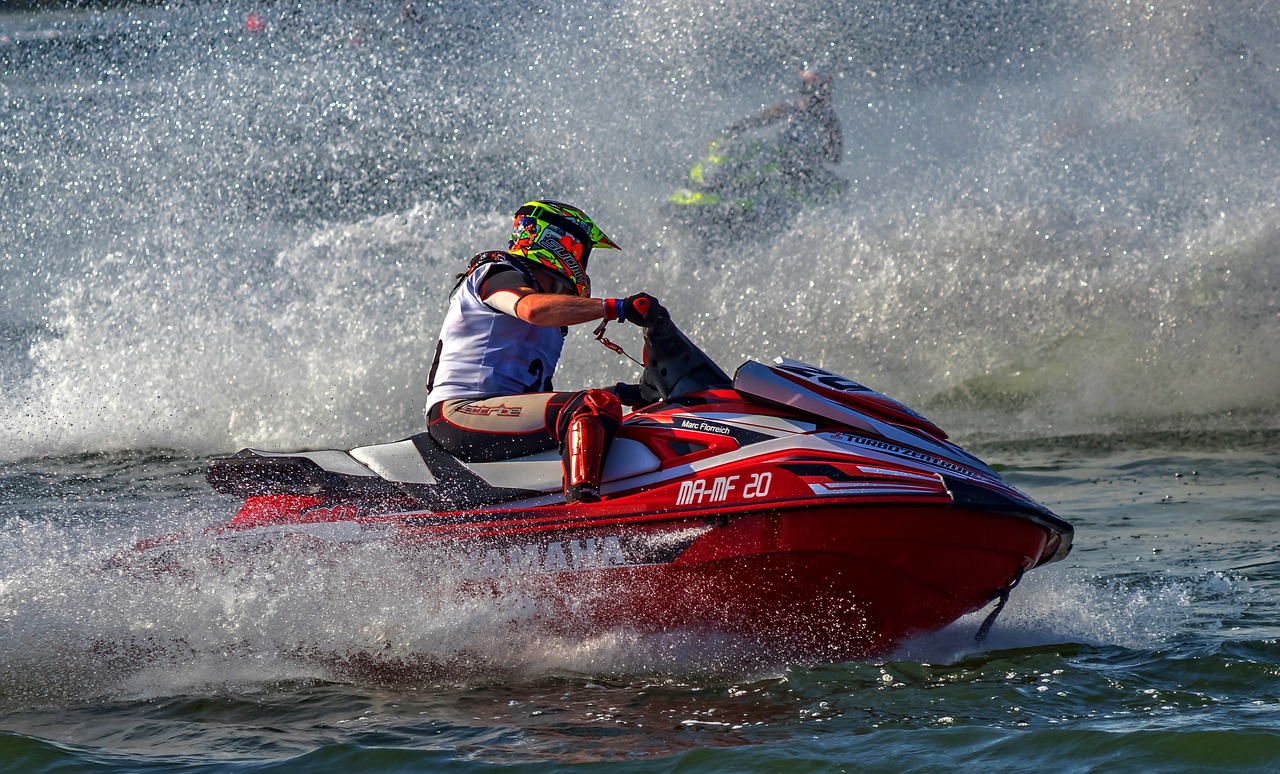
Best Practices for Safe Riding
Jet skiing is one of the most exhilarating ways to enjoy the open water, but it comes with its own set of responsibilities. To ensure you have the best experience while staying safe, it’s essential to implement some best practices for safe riding. First and foremost, maintaining control of your jet ski is crucial. This means being aware of your surroundings and adjusting your speed accordingly. Think of it like driving a car; you wouldn’t speed down a narrow road packed with pedestrians, right? The same principle applies to the water. Keep an eye out for other riders, boats, and any obstacles that might come your way.
Another key aspect is situational awareness. Always be alert to the conditions around you, including the behavior of other watercraft and any environmental changes. For instance, if you notice a sudden change in the wind or water surface, it could signal an approaching storm or rough waters. Just as a sailor checks the skies before setting sail, you should be vigilant about the weather. Here’s a quick checklist of things to keep in mind:
- Watch for changes in wind speed and direction.
- Look for dark clouds or lightning in the distance.
- Be cautious of sudden waves or choppy water.
Maintaining a safe distance from other watercraft is another critical practice. Too often, riders get caught up in the thrill and forget that space equals safety. Keeping a safe distance not only allows you to react in time if someone else makes a sudden move but also gives you room to maneuver your jet ski. A good rule of thumb is to stay at least 100 feet away from other vessels and any fixed objects. This distance can help prevent collisions and ensure that you have enough space to make quick turns if necessary.
As you ride, be sure to stay aware of your speed, especially in crowded areas or near shorelines. Speed limits and no-wake zones are not just suggestions; they are there to protect both you and the environment. Understanding these regulations will not only keep you compliant with local laws but also help you avoid accidents. If you find yourself in a no-wake zone, slow down and enjoy the scenery—it’s all part of the experience!
Lastly, let’s talk about weather awareness. The weather on the water can change faster than you might think. Always check the forecast before you head out, and consider carrying a waterproof radio or smartphone to keep updated on any weather alerts. If you start to see storm clouds gathering or feel a drop in temperature, it’s time to head back to shore. Remember, it’s better to cut your ride short than to be caught in severe weather.
Q: What should I do if I capsize my jet ski?
A: If you capsize, stay calm. Make sure you're wearing your life jacket, then swim to the back of the jet ski and try to climb back on. If you can't, signal for help.
Q: How can I ensure my jet ski is in good condition before riding?
A: Always conduct a pre-ride inspection, checking for fuel levels, oil, and any visible damages. Ensure that all safety equipment is on board and functional.
Q: Are there specific hand signals I should know while riding with others?
A: Yes! Familiarize yourself with common hand signals for communication, such as pointing to indicate direction changes or raising a hand to signal stopping.
Q: Can I ride a jet ski alone?
A: While it’s possible to ride alone, it’s safer to ride with a buddy. Having someone with you can be invaluable in case of an emergency.

Maintaining a Safe Distance
When you're out on the water, one of the most critical aspects of jet skiing safely is from other watercraft and obstacles. Just like in driving a car, where you wouldn't tailgate the vehicle in front of you, the same principle applies to jet skiing. Keeping an appropriate distance not only helps in avoiding collisions but also gives you ample time to react to unexpected situations. Imagine you're riding your jet ski, and suddenly, a boat cuts across your path. If you're too close, you might not have enough time to maneuver safely. So, how do you determine what a safe distance is?
Generally, a good rule of thumb is to maintain at least 100 feet between your jet ski and other vessels. This distance allows you to have a clear view of your surroundings and react promptly to any sudden movements from other riders. However, this distance can vary based on several factors:
- Speed: The faster you're traveling, the more distance you need to account for. Higher speeds require longer stopping distances.
- Visibility: In poor weather conditions or at night, increase your distance to ensure you have enough time to react.
- Water Conditions: Choppy waters can make it harder to control your jet ski, so keep a greater distance from other vessels.
Another important aspect of maintaining a safe distance is being aware of your surroundings. Always keep an eye out for other jet skiers, boats, swimmers, and any floating debris. Just like a hawk surveying its territory, you should be constantly scanning the water ahead of you. This not only helps in avoiding collisions but also enhances your overall riding experience.
Moreover, knowing the local regulations can also guide you on safe distances. Some areas may have specific rules that dictate how far you should stay away from other watercraft or designated swimming zones. Always familiarize yourself with these rules before hitting the water.
In conclusion, maintaining a safe distance while jet skiing is akin to having a safety net. It provides you with the necessary buffer to avoid mishaps and enjoy your time on the water. So next time you’re out jet skiing, remember: space equals safety. Keep your distance, stay alert, and have a blast!
- What is the minimum safe distance to maintain from other jet skiers? It's recommended to keep at least 100 feet between you and other vessels.
- How does speed affect the safe distance? The faster you go, the more distance you need, as higher speeds require longer stopping distances.
- Are there regulations for safe distances on the water? Yes, local laws may dictate specific distances to maintain, especially near swimming areas.
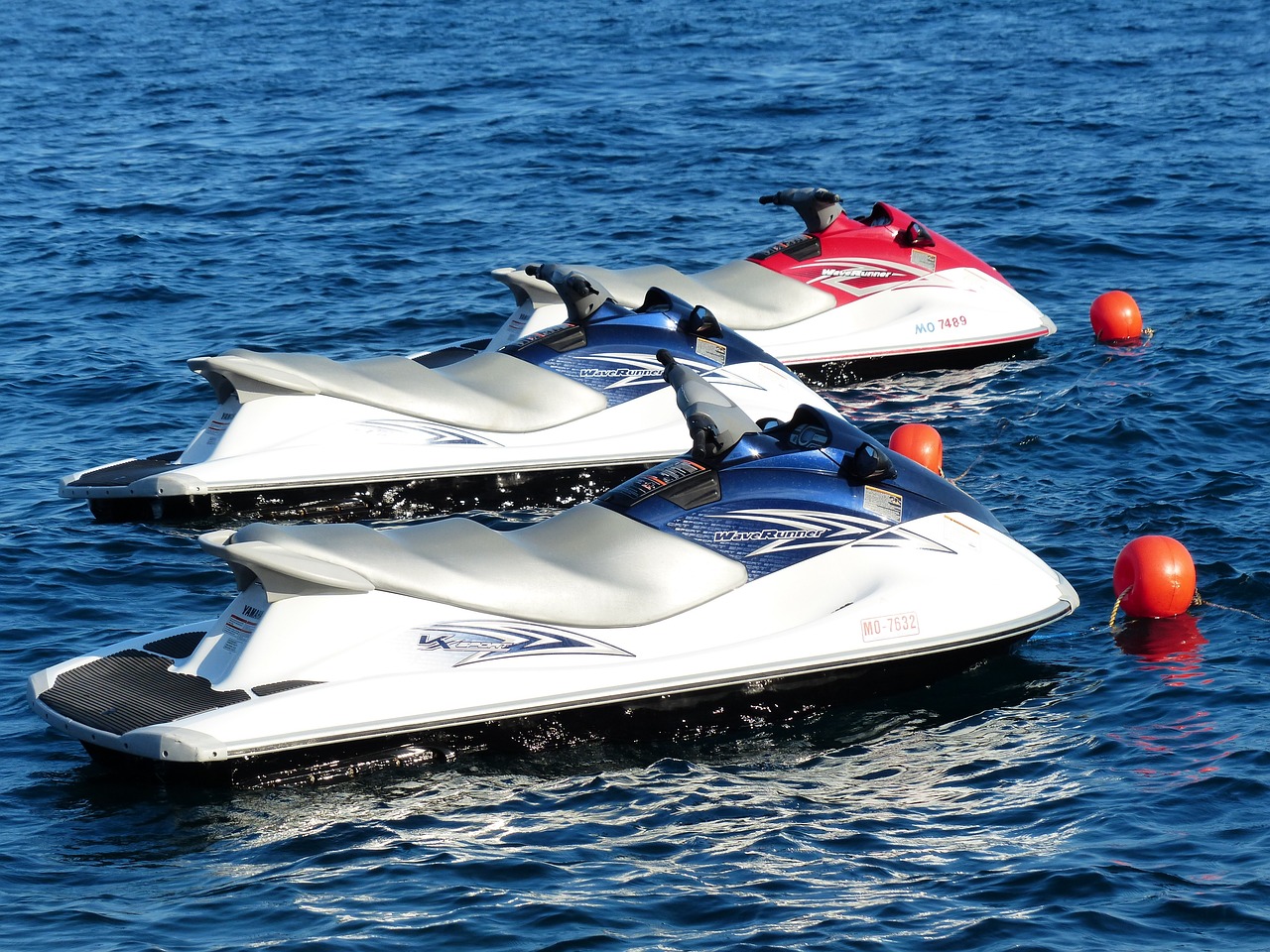
Weather Awareness
When you're out on the water, the last thing you want is to be caught off guard by sudden changes in weather. Imagine you're having the time of your life, zipping across the waves, when dark clouds roll in, and the wind starts howling. It's essential to develop a keen sense of to ensure your jet skiing adventure remains safe and enjoyable. Before you even set foot on your jet ski, take a moment to check the local weather forecast. Look for key indicators such as wind speed, precipitation chances, and any weather advisories that may be in effect. A quick glance at a weather app or website can make all the difference in your day.
But it's not just about checking the forecast; you also need to be aware of the signs that nature gives you while you're out on the water. For instance, if you notice darkening skies or an increase in wind speed, it might be time to consider heading back to shore. The water can become choppy and dangerous very quickly due to strong winds, which can make controlling your jet ski much more challenging. Additionally, be cautious of sudden temperature drops, as these can indicate an approaching storm.
Here are a few key weather signs to watch for while jet skiing:
- Dark Clouds: If you see dark clouds gathering, it’s often a sign of an impending storm.
- Increased Wind: Strong winds can create dangerous waves and should prompt you to head back.
- Temperature Changes: A sudden drop in temperature can indicate that a storm is on the way.
- Lightning: If you see lightning, it's crucial to get off the water immediately.
Furthermore, it's wise to familiarize yourself with local weather patterns. Some areas may experience sudden squalls or storms that can catch even seasoned riders off guard. Understanding the typical weather conditions for the time of year can help you plan your rides more effectively. For example, summer may bring thunderstorms in the afternoon, while winter might present icy conditions that could make riding hazardous.
Lastly, consider investing in a waterproof handheld radio or a smartphone with a waterproof case. This way, you can stay updated on weather alerts while out on the water. Some jet skis even come equipped with GPS systems that provide real-time weather updates, which can be a game-changer for your safety. Remember, the goal is to have fun, but safety should always come first. By being aware of the weather and taking proactive measures, you can ensure that your jet skiing experience remains both thrilling and safe.
Q: How can I check the weather before going jet skiing?
A: You can check the weather using local news channels, weather websites, or dedicated weather apps on your smartphone. Always look for wind speed, precipitation chances, and storm warnings.
Q: What should I do if I see a storm approaching while I'm on the water?
A: If you notice a storm approaching, it’s important to head back to shore immediately. Avoid staying out on the water during severe weather conditions.
Q: Can I jet ski in the rain?
A: While light rain may not be dangerous, it's essential to monitor weather conditions closely. If there are thunderstorms or high winds, it's best to avoid riding altogether.
Q: Are there specific weather conditions that are unsafe for jet skiing?
A: Yes, conditions such as high winds, heavy rain, thunderstorms, and low visibility are unsafe for jet skiing. Always prioritize safety and be aware of your surroundings.
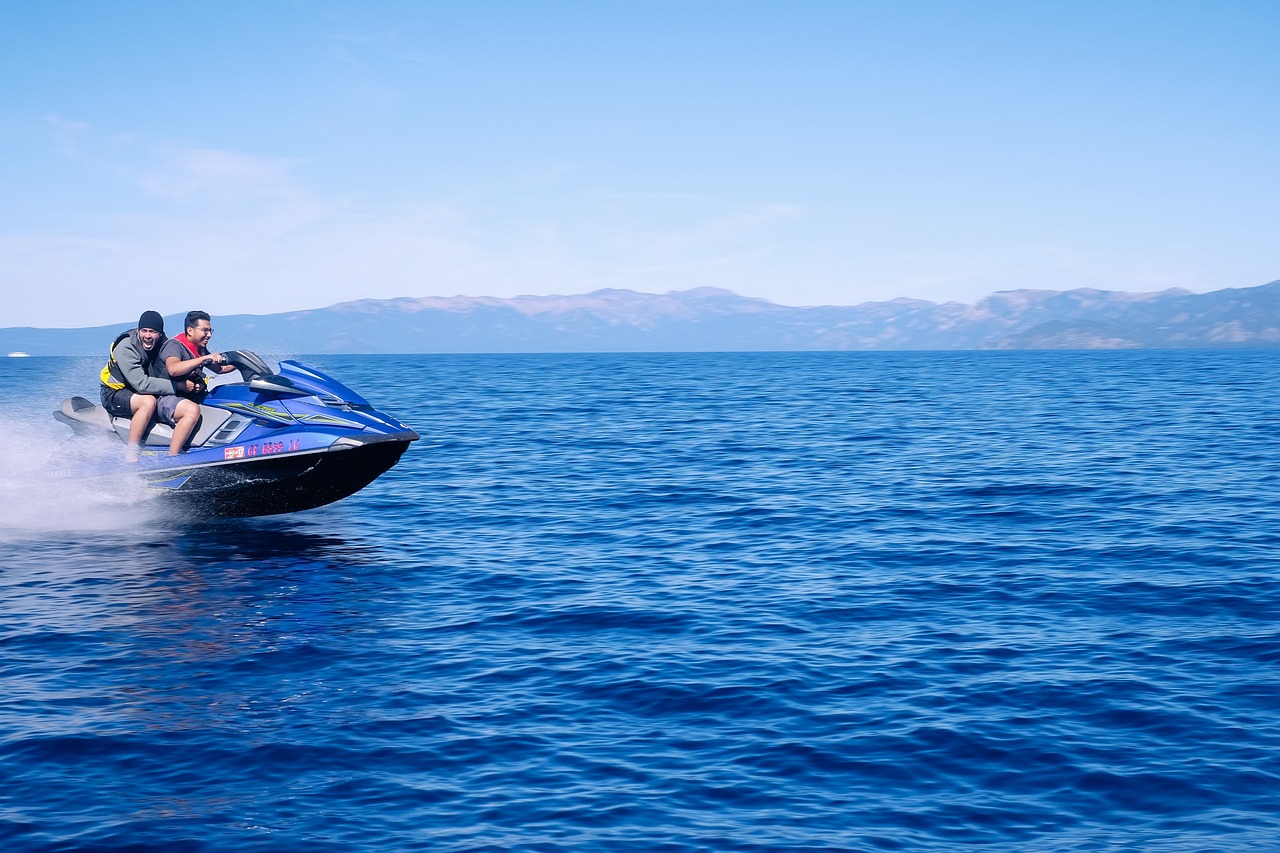
Emergency Preparedness
When it comes to jet skiing, the thrill of speeding across the water can be exhilarating, but it’s essential to remember that safety should always be your top priority. is a crucial aspect of enjoying this exciting sport. It’s not just about having fun; it’s about being ready for whatever might come your way. Imagine you’re out on the water, the sun is shining, and everything seems perfect. Suddenly, a storm rolls in, or you experience mechanical failure. Are you prepared? Let’s dive into the essential steps to ensure you’re ready for any situation.
Before you even set foot on your jet ski, there are a few critical preparations you should make. First, always check the weather forecast before heading out. Weather conditions can change rapidly, and being caught in a storm can turn a fun day into a dangerous one. Keep an eye on local weather updates and be aware of any warnings. If the forecast looks sketchy, it might be best to postpone your adventure.
Next, consider establishing a communication plan with your fellow riders. Having a strategy in place can make a significant difference in an emergency. Before you hit the water, agree on hand signals and ensure everyone knows how to use their communication devices effectively. Whether it’s a two-way radio, a cell phone, or even a whistle, staying connected can be a lifesaver. Here are some key points to include in your communication plan:
- Designate a meeting point in case anyone gets separated.
- Establish a specific time to check in with each other.
- Discuss how to signal for help if someone is in distress.
In addition to communication, it’s vital to prepare for emergencies by equipping your jet ski with essential safety gear. This includes items like a first aid kit, a fire extinguisher, and a signaling device such as a whistle or flare gun. You never know when you might need these items, so having them on hand is crucial. It’s like packing an umbrella on a sunny day; you might not need it, but you’ll be glad you have it if the skies open up.
Now, let’s talk about what to do in the event of an accident. Knowing how to respond can make all the difference. If someone gets injured, it’s important to stay calm. Assess the situation and provide first aid if you’re trained to do so. If the injury is severe, don’t hesitate to contact emergency services. Make sure you know how to reach them from your location, as cell service can be spotty on the water.
Furthermore, always carry a float plan. This is simply a plan that outlines where you’ll be riding and when you expect to return. Share this information with someone on land who can alert authorities if you don’t return on time. It’s a simple step, but it can significantly enhance your safety.
In summary, being prepared for emergencies while jet skiing is not just about having the right equipment; it’s about planning, communication, and knowing how to respond in various situations. By taking these precautions, you can enjoy your time on the water with peace of mind, knowing that you’re ready for whatever may come your way. So, before you rev up that engine, take a moment to prepare; it could make all the difference in ensuring a safe and enjoyable ride.
Q1: What should I do if I get lost while jet skiing?
A1: Stay calm and try to retrace your route. Use your communication device to call for help if needed, and always remember to have a float plan in place.
Q2: How can I ensure my jet ski is in good condition before riding?
A2: Regularly check the oil, fuel, and battery. Inspect the body for any damage and ensure all safety equipment is onboard and functional.
Q3: What should I include in my first aid kit for jet skiing?
A3: Include band-aids, antiseptic wipes, gauze, adhesive tape, pain relievers, and any personal medications. Don’t forget a CPR mask if you’re trained in CPR.
Q4: Are there specific emergency signals I should know?
A4: Yes! Common signals include waving your arms, using a whistle, or displaying a bright-colored flag. Make sure everyone in your group understands these signals.

Developing a Communication Plan
When you're out on the water, having a solid communication plan with your fellow jet ski riders is not just a good idea; it's essential for safety. Imagine zooming across the waves, the wind in your hair, and suddenly, you notice something's gone awry. Perhaps a rider has fallen off, or someone needs assistance. In these moments, clear communication can be the difference between a minor inconvenience and a serious emergency. So, how do you establish a reliable communication plan before you hit the water?
First, it’s important to discuss and agree on a set of signals and phrases that everyone will use while riding. These can be hand signals or specific words that convey urgency or need for assistance. For instance, if someone raises their hand with an open palm, it could mean "stop" or "slow down," while a closed fist might indicate "emergency." Make sure everyone understands these signals before you set off.
Next, consider using two-way radios or waterproof communication devices. These can be invaluable for staying in touch, especially when you’re separated by distance or noise from the jet ski engines. If you're in a group, assign a designated communicator who will be responsible for keeping in touch with everyone. This person can relay important information, like changes in plans or alerts about weather conditions.
Additionally, establish a meeting point in case someone gets separated from the group. This could be a specific landmark or a buoy where everyone knows to regroup. Having a designated spot ensures that if anyone gets lost or experiences trouble, they have a clear place to head to for safety.
Finally, it’s crucial to discuss emergency procedures. Make sure everyone knows how to contact local authorities or emergency services if needed. Create a list of important phone numbers and share it with the group before you venture out. This list can include:
- Local Coast Guard or marine patrol number
- Emergency medical services
- Contact numbers for rental companies, if applicable
By taking these steps to develop a communication plan, you’re not just enhancing your safety; you’re also making the whole experience more enjoyable. After all, jet skiing is about having fun, and knowing that you can rely on your companions in times of need allows you to focus on the thrill of the ride. So, gather your crew, discuss these strategies, and prepare for a safe day on the water!
Q: What should I do if I get separated from my group?
A: Head to the designated meeting point you established before riding. If you can't find it, stay calm and look for familiar landmarks.
Q: How can I improve communication while riding?
A: Use hand signals, two-way radios, and establish clear phrases for common situations. Make sure everyone understands and practices them before heading out.
Q: What emergency numbers should I have on hand?
A: Keep a list of local emergency services, Coast Guard, and any relevant contact numbers for your group. Share this list with everyone before riding.

Responding to Accidents
Accidents on the water can happen in the blink of an eye, and being prepared to respond can make all the difference in ensuring safety for everyone involved. First and foremost, it's crucial to remain calm. Panic can cloud judgment and lead to poor decision-making. Take a deep breath and assess the situation. Are you or anyone else injured? Is there immediate danger, such as fire or sinking? These are the first questions you should consider.
If someone is injured, prioritize their safety. If you are trained in first aid, provide assistance to the best of your ability. If not, it’s essential to contact emergency services right away. Use your jet ski's communication equipment, or if that’s not available, signal for help from nearby boaters. Remember, your safety and the safety of others is paramount. Always carry a first aid kit on board, as it can be a lifesaver in emergencies.
Next, if the accident involves another watercraft, exchange information with the other party. This includes names, contact details, and insurance information. It’s also wise to document the accident scene by taking photos. This can be useful for insurance claims or any legal matters that may arise later. Make sure to gather witness statements if there are bystanders, as their accounts can provide valuable context.
After ensuring everyone is safe and the situation is under control, it’s time to report the accident. Depending on local regulations, you may be required to notify authorities, especially if there are injuries or significant property damage. Check the regulations in your area to know your obligations. Failure to report an accident can lead to legal repercussions.
When it comes to handling the aftermath of an accident, it's essential to reflect on what went wrong. This can be a tough pill to swallow, but learning from the incident can help prevent future accidents. Discuss with your riding companions what happened and how similar situations can be avoided in the future. Consider taking a safety course or a refresher course on jet ski operation and safety to enhance your skills.
Lastly, remember that accidents can be traumatic. If you or someone else involved is feeling anxious or stressed after the incident, don't hesitate to seek support. Talking to someone about the experience can help process the event and restore confidence in riding. Safety on the water is not just about physical preparedness; it's also about mental readiness.
- What should I do immediately after a jet ski accident?
Assess the situation, ensure everyone is safe, provide first aid if necessary, exchange information with others involved, and report the accident if required.
- Do I need to report every accident?
Not every accident needs to be reported, but if there are injuries or significant property damage, you must notify the authorities according to local laws.
- How can I prevent accidents while jet skiing?
Maintain a safe distance from other watercraft, stay aware of your surroundings, follow local regulations, and always wear appropriate safety gear.
- Is it important to have a first aid kit on my jet ski?
Yes, a first aid kit is essential for handling minor injuries and can be invaluable in emergencies.
Frequently Asked Questions
- What safety gear do I need for jet skiing?
Before you hit the waves, it's essential to wear the right safety gear. This includes a properly fitted life jacket, which is non-negotiable, a helmet for head protection, and protective clothing to guard against abrasions and the sun. Think of it as your armor against the unpredictable nature of water sports!
- How do I choose the right life jacket?
Choosing the right life jacket is crucial for your safety. Look for one that fits snugly but allows for easy movement. It should be approved by safety standards and designed for the type of water activity you’re engaging in. Remember, a life jacket that’s too loose won’t keep you safe in an emergency!
- Are there any licensing requirements for jet ski riders?
Yes, many regions require jet ski operators to have specific licenses or certifications. This is to ensure that riders understand the rules of the water and can operate their craft safely. Always check local regulations before you ride to avoid any legal hiccups!
- What are no-wake zones and why are they important?
No-wake zones are areas where you must operate your watercraft at idle speed to prevent creating waves that can damage shorelines or disturb wildlife. Understanding these zones is vital for protecting the environment and ensuring the safety of other boaters and swimmers around you.
- How can I maintain a safe distance from other watercraft?
Maintaining a safe distance is all about being aware of your surroundings. Always keep a buffer zone between your jet ski and other vessels, as well as obstacles like buoys and docks. Think of it as giving yourself room to maneuver in case someone else doesn’t see you!
- What should I do if I encounter bad weather while jet skiing?
If the weather turns sour, the best course of action is to head back to shore immediately. Always check the weather forecast before you set out and keep an eye on the sky while riding. If you see dark clouds or feel a sudden drop in temperature, it’s time to get to safety!
- How can I prepare for emergencies while jet skiing?
Preparation is key! Before you ride, make sure you have a first aid kit on board, a whistle for signaling, and a fire extinguisher if required. Also, develop a communication plan with your riding buddies so you can stay connected in case of emergencies. It’s like having a safety net that can save lives!
- What should I do if I witness an accident on the water?
If you witness an accident, your first step should be to ensure your own safety. Then, call for help as soon as possible, whether that’s contacting local authorities or signaling for assistance. If it’s safe to do so, you might be able to provide aid, but only if you’re trained and it’s safe to approach!

